|
Often, around this time of the year, the unstable atmosphere of winter yields to the more settled air of spring in Washington, DC. With the mosquitoes a month or two away, now is the time to observe as much as possible. The planets are all lined up at sunset, but unfortunately that part of the sky is obscured in all my nearby observing spots. Instead, for two nights over the past week, I've enjoyed a world much nearer our own. Today the sky was a beautiful, deep azure, and tonight's forecast called for good seeing with fair transparency. I decided conditions were good enough to exert a little more effort than usual. I hauled out my TEC 140 - now on a hulking Berlebach Planet tripod - and found a nook not far from my backyard. At this time of the year, budding leaves are just beginning to make my backyard unusable for astronomy. Turning to the Moon, I was disappointed - if not exactly surprised - to realize that the forecast had, again, gotten it wrong. Seeing seemed mediocre at best, and the atmosphere had that soft, milky quality that often frustrates planetary and lunar viewing. As my eyepieces and, to a lesser extent, my telescope cooled down, the atmosphere between me and the Moon started to stabilize - or, rather, it started dip into fleeting moments of clarity. Especially compelling in these "revelation peeps" - using Percival Lowell's terminology, as I've mentioned in an earlier entry - was Schickard crater, the massive walled plain clearly visible towards the center-right of this picture: Schickard's crater floor - that walled plain - was alive with irreducible detail, including countless tiny craterlets. As Eugene Shoemaker established at the dawn of the Space Age, the layering of lunar features provides a roadmap to their age. Signs of bombardment on the floor and walls of a big crater provide clear evidence that the big crater is very old. Of course, the little craters scattered around the big crater would have formed long after the big one. I love looking at the Moon as a geologist might, and I am always especially drawn to features on which observers have reported transient lunar phenomena (TLPs). Influential amateur Patrick Moore, for example, reported what seemed like a mist over Shickard just before Hitler's army invaded Poland in 1939. This time, however, all was crystal-clear. It was not my first lunar experience of the week. Several nights ago, I stepped out with my most portable setup - the Takahashi FC-100DZ on a photographic tripod - because atmospheric conditions were forecast to be mediocre at best. I'm glad I did! After I set up - with only my Baader variable zoom eyepiece in hand - I turned to the Moon and realized that, in fact, seeing was far better than average. Have a look at the picture above. Comparing it to the picture that begins this entry will reveal that, for amateur astronomers, the state of the atmosphere can be so much more important than the capabilities of a telescope. The first image was taken by a telescope that costs well over twice as much, and gathers more than twice as much light, as the one that provided that second image. Yet the second image is clearly far better. Here's a close-up of my favorite stretch of the Moon: the wonderfully diverse landscape winding from Plato (top) and Vallis Alpes down through Mare Imbrium to Archimedes, Erastosthenes, and finally spectacular Copernicus, here largely enveloped in shadow. Many of these features - or environments, as I prefer to think of them - have a rich and often bizarre history. Across some three hundred years, scientists compared them to features on Earth, speculated about their supposed inhabitants, tracked their alleged changes, and finally explored them through the voyages of crewed and robotic spacecraft.
Just look at the extraordinary detail the little Takahashi reveals - and remember that, as usual, this is an iPhone picture that blurs what is visible to the naked eye. Honestly, if you're into lunar exploring, you don't need more than a quality four-inch refractor.
1 Comment
Rick
6/6/2023 05:33:33 am
Great photos - that's my favorite part of the moon too!
Reply
Leave a Reply. |
Archives
March 2024
Categories
All
|

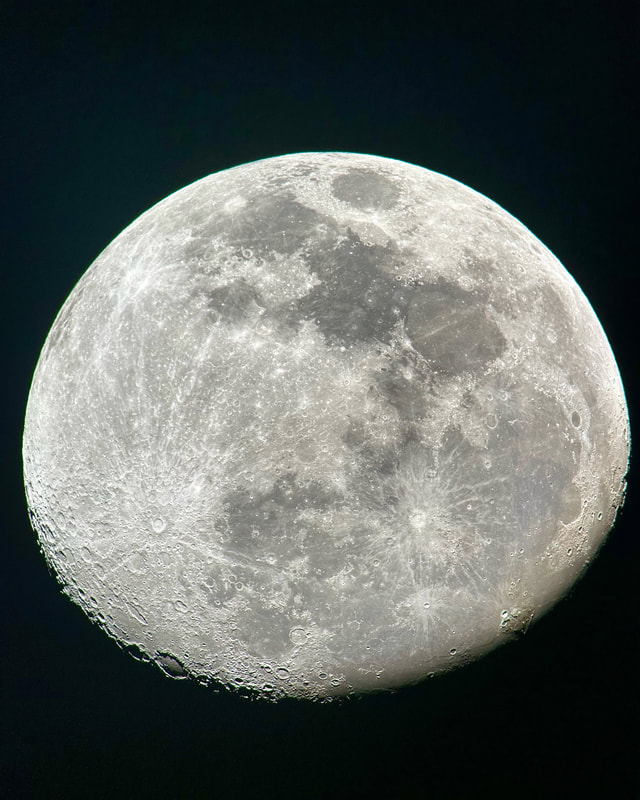
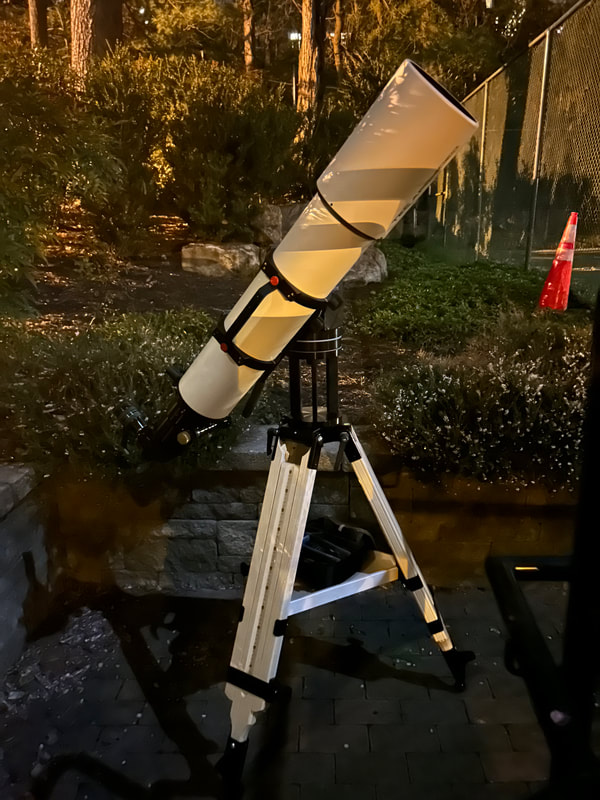
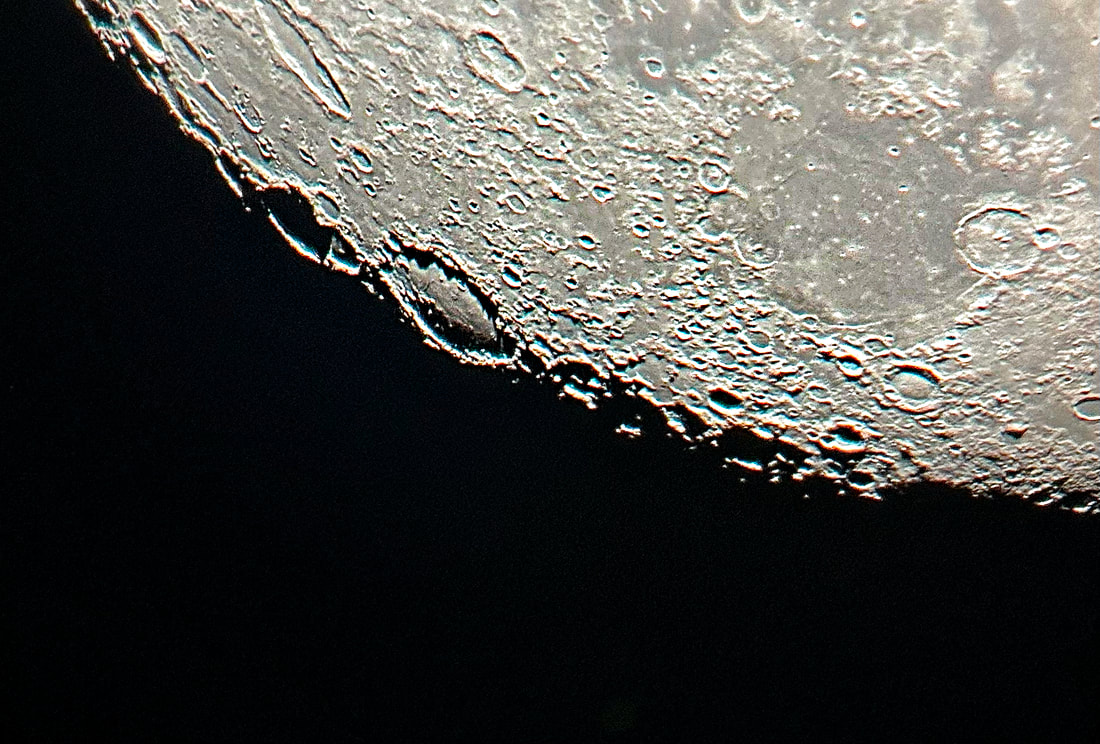
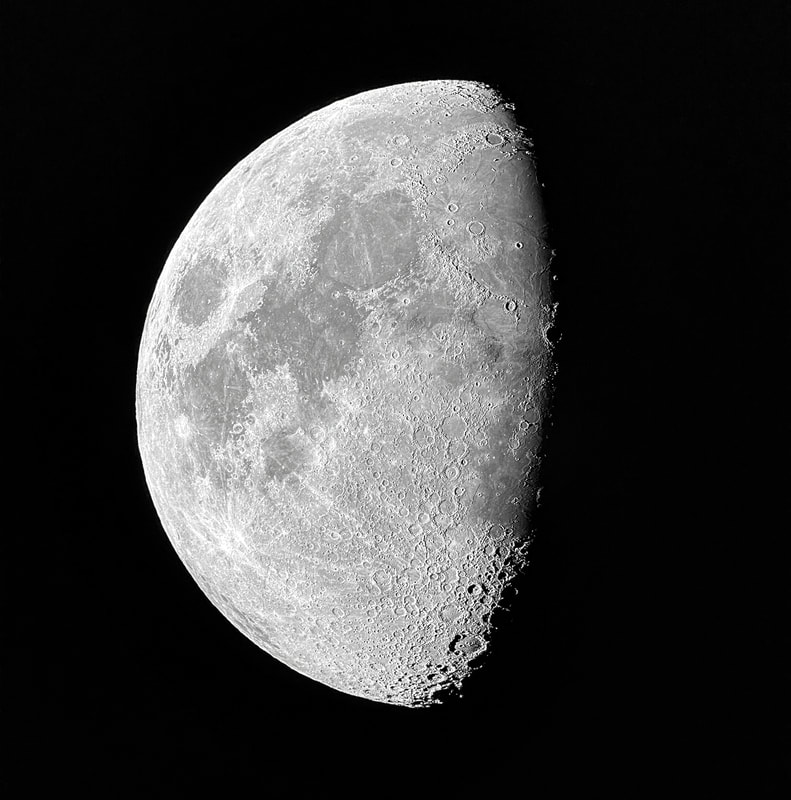
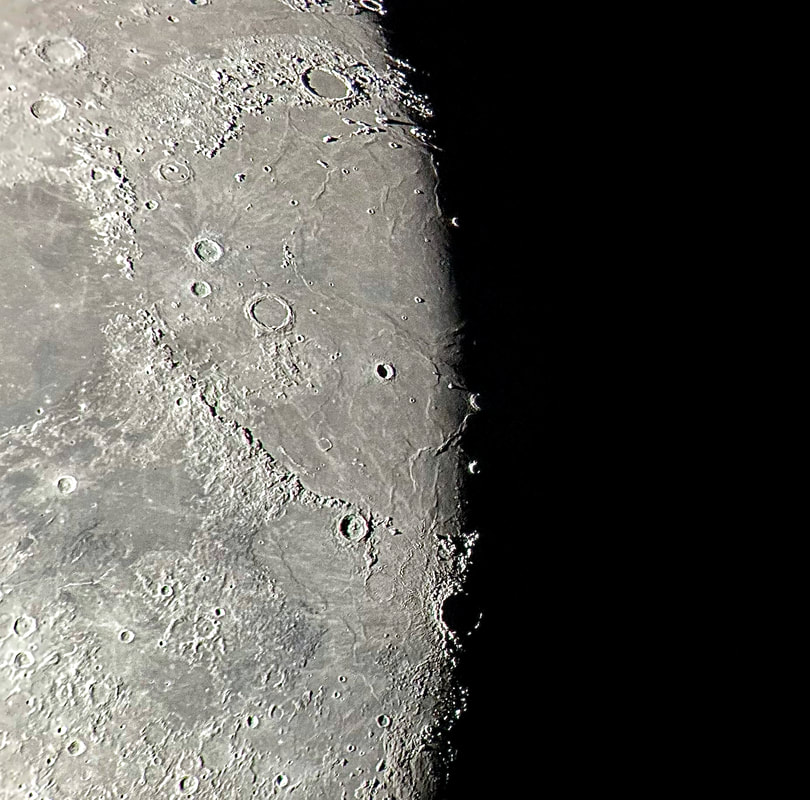

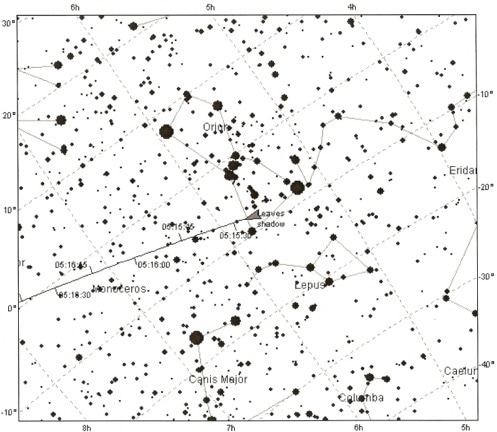
 RSS Feed
RSS Feed